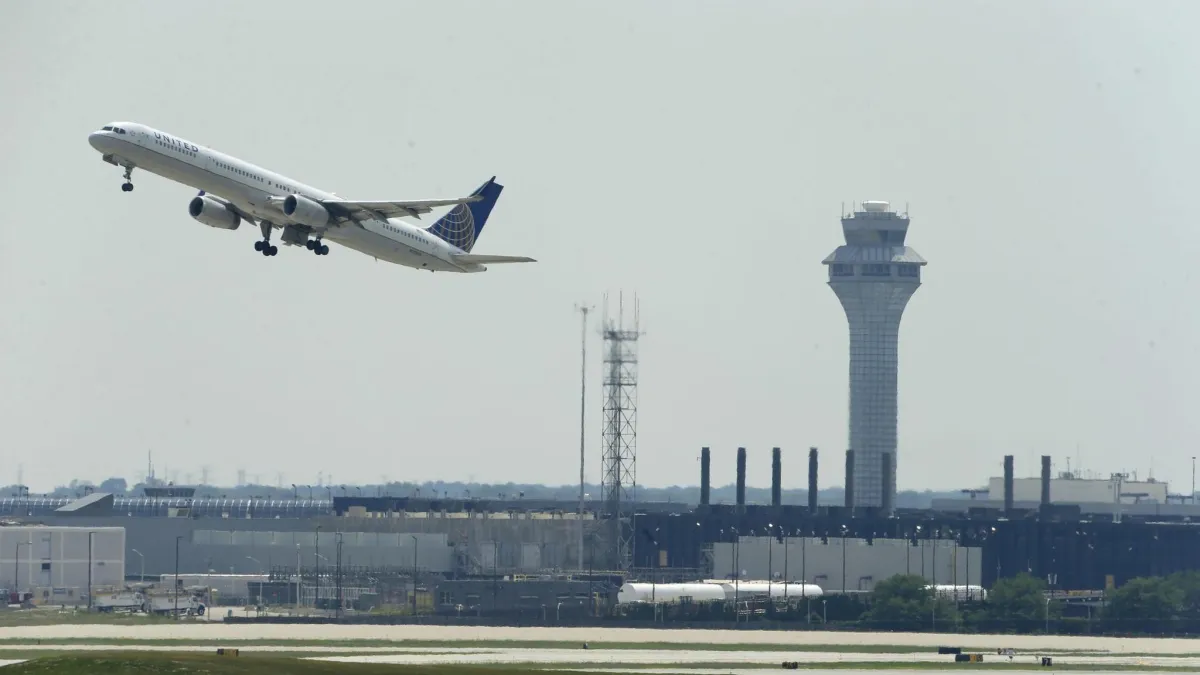Copyright Salt Lake City Deseret News

On Sunday, Utahn Kaity Jensen was supposed to fly home to the Salt Lake City International Airport, but her flight was canceled at the last minute. The airline didn’t make any accommodations for her and she wasn’t able to find another flight, so Jensen got a rental car and drove the 11 hours home by herself. She had flown out of the Salt Lake airport with no problem just days before. It’s a similar tale at many airports, one that won’t likely be resolved soon. Despite the record-breaking government shutdown nearing an end, flight disruptions are expected to continue throughout the week and possibly longer across the U.S. On Monday, the U.S. Senate passed a bill to end the shutdown, and now it has gone to the House of Representatives, which is scheduled to vote on the bill on Wednesday. Since the shutdown began on Oct. 1, there have been tens of thousands of flight delays and cancellations in the U.S. caused by air traffic control staffing shortages and severe weather, per USA Today. After the FAA ordered flight reductions last week, the number of flights required to be cut has increased. By Thursday, 8% of flights are required to be cut, and on Friday, the number should go to 10%. During a news conference on Tuesday at Chicago O’Hare International Airport, Secretary of Transportation Sean Duffy urged lawmakers to reopen the government, warning of dire consequences to air travel if it doesn’t open soon. “If the House doesn’t pass this bill, I think you’re going to look at Saturday, Sunday and Monday as tiddlywinks,” Duffy said, per USA Today. “It was beautiful. It’s going to get much worse than that.” Flight disruptions expected to continue after government reopens Even though the shutdown could end this week, it could take weeks for flight schedules to return to normal. This is because FAA workers will have to work through a 42-day backlog of work left undone, including aircraft safety checks and inspections, per the Las Vegas Review Journal. In addition, air traffic control towers were not fully staffed before the shutdown, so once the government reopens, the hiring process is expected to ramp up. Some air traffic controllers had to pick up second jobs during the shutdown since they went multiple pay periods without being paid. Duffy also shared that there were controllers retiring at a higher than average rate during the shutdown. Airlines will also have to reposition their aircraft after moving them around to accommodate the shutdown. Since the FAA ordered flight cuts last week, airlines have canceled more than 9,000 flights across the U.S. Another reason it could take a while is because airlines canceled flights days in advance to give customers notice. They also have to make sure flight attendants and pilots are in the right locations to operate flights as scheduled, per The New York Times. “Airlines’ reduced flight schedules cannot immediately bounce back to full capacity right after the government reopens,” Airlines for America, a trade group that represents the largest passenger and cargo airlines, said in a statement on Monday. “It will take time, and there will be residual effects for days.” Sean Duffy promises quick backpay for air traffic controllers During Tuesday’s news conference, Duffy said that air traffic controllers will receive 70% of their back pay within 24 to 48 hours of the government reopening. The remaining 30% should arrive about a week later, per USA Today. “They’re going to get money in their bank accounts very quickly,” he said. Staffing issues with air traffic controllers are one of the key reasons the FAA ordered flight cuts at 40 airports across the U.S. On Tuesday, Duffy said the agency is still short around 2,000 air traffic controllers. The remaining controllers have been working long, stressful schedules without pay during the shutdown. Cancellations at the Salt Lake City Airport Salt Lake City International Airport is on the FAA’s list of 40 airports that are experiencing flight reductions. Anna Johnson, another Utahn, is planning on flying out of Salt Lake to Los Angeles on Monday and has also been booking flights for other people at her company. She wrote that every morning she has been “nervously checking to see if they’ve been canceled.” So far, she hasn’t had any issue but she has received an email from Delta Air Lines with options in case a flight does get canceled. Johnson added that with the shutdown and flight cancellations her “anxiety around flying” has really increased. “Having to constantly check the airline website to see if they’ve canceled any of the flights I’m relying on is a constant source of stress,” she wrote. “I don’t think I’ll relax until I’m back on the ground in Salt Lake after my trip next week.” On Wednesday, the Salt Lake airport had 13 departing flights canceled and another 12 arriving flights canceled. The affected airlines are Delta, SkyWest and Southwest. There are also already cancellations being posted for Thursday’s flights out of Salt Lake. Tuesday had the lowest rate of flight cancellations since the cuts were ordered last week, with just 5% of the scheduled 22,811 flights being canceled, per USA Today. On Monday, there were 2,239 flights canceled, an 8.7% cancellations rate and Sunday had a 10.2% cancellation rate with 2,633 canceled flights. There were also a number of delays from staffing shortages and bad weather at major airports such as Chicago O’Hare. The number of flight cancellations also dropped on Wednesday, with the flight-tracking website FlightAware showing that there were 893 cancellations in the U.S. as of Wednesday morning. Concerns over Thanksgiving travel plans According to CNBC, aviation groups have said that a record number of people are expected to travel over the Thanksgiving period. The holiday is now just over two weeks away. Because it could take time for flight schedules to return to normal, many people across the country have concerns about their Thanksgiving travel plans. Since the shutdown began in October, over 5 million people have been affected by flight disruptions. Some travelers are looking for alternatives, such as buses and rental cars.



